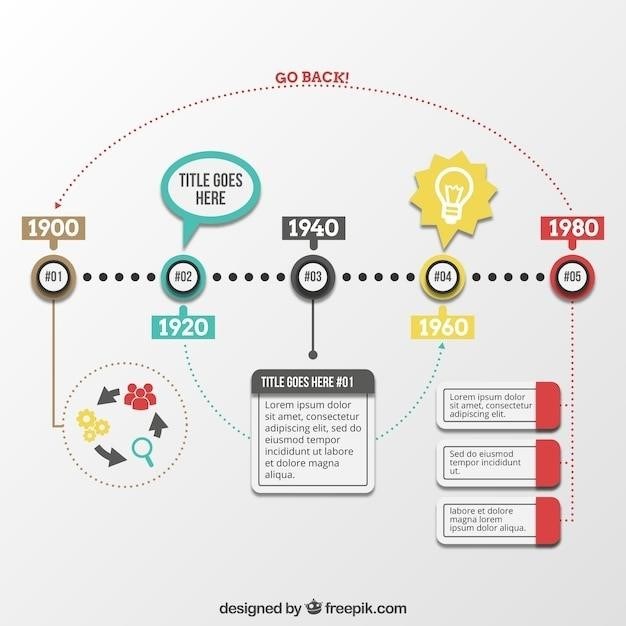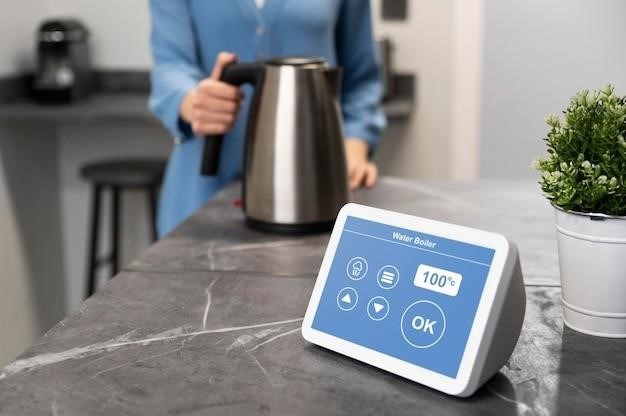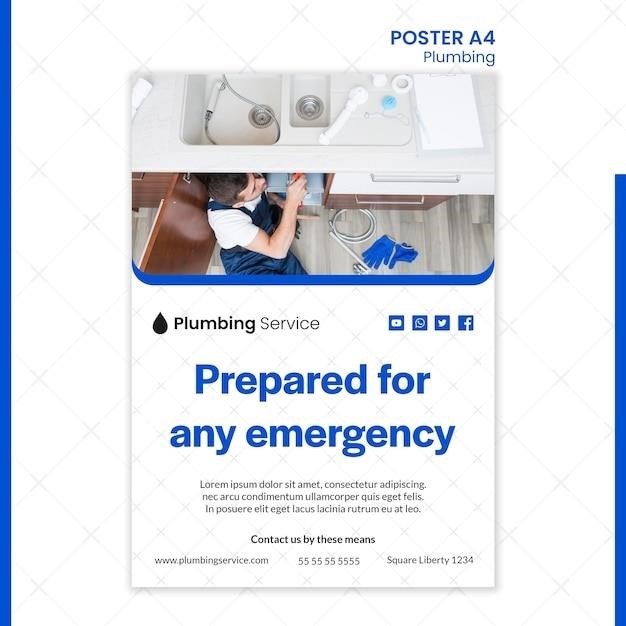TV Guide for Virginia⁚ Cable Channels and Listings
This comprehensive guide provides a detailed overview of cable TV channels and listings in Virginia‚ covering major cities like Virginia Beach‚ Fairfax‚ and Richmond. Explore popular cable TV providers‚ channel lineups‚ and specific channel information‚ including over-the-air and antenna options. Stay informed about local programming and discover additional resources for news and sports updates.
Introduction
Navigating the vast world of cable TV channels can be a daunting task‚ especially in a state as diverse as Virginia. With a multitude of providers‚ channel packages‚ and programming options‚ finding the perfect TV experience can feel overwhelming. This guide serves as your comprehensive roadmap to understanding cable TV in Virginia. We delve into the major cable TV providers operating across the state‚ highlighting popular channels and offering detailed TV listings for key cities like Virginia Beach‚ Fairfax‚ and Richmond. Whether you’re seeking local news‚ sporting events‚ or your favorite entertainment shows‚ this guide provides the information you need to find the channels you desire and enjoy a seamless viewing experience.
Cable TV Providers in Virginia
Virginia boasts a wide range of cable TV providers‚ each offering unique channel packages and pricing plans to cater to diverse viewing preferences. Cox Communications‚ a prominent provider‚ extends its services across various regions of Virginia‚ including Fairfax and Virginia Beach. Spectrum‚ another major player‚ provides cable TV services in numerous Virginia cities and towns. Verizon Fios‚ renowned for its fiber-optic network‚ delivers high-speed internet and cable TV services to select areas within the state. Comcast‚ a leading cable provider‚ offers extensive coverage in Virginia‚ encompassing major cities like Richmond and Norfolk. These providers compete fiercely to attract customers with competitive pricing‚ bundled packages‚ and a variety of channel options‚ ensuring viewers have ample choices to suit their entertainment needs.
Popular Cable TV Channels in Virginia
Virginia residents enjoy access to a diverse array of popular cable TV channels‚ catering to various interests and preferences. News enthusiasts find solace in channels like CNN‚ MSNBC‚ and Fox News‚ keeping them informed about national and international events. Sports fans revel in the thrill of ESPN‚ ESPN2‚ and the NFL Network‚ immersing themselves in live games‚ highlights‚ and analysis. For entertainment seekers‚ channels like HBO‚ Showtime‚ and Starz offer premium movies‚ original series‚ and documentaries. Discovery Channel‚ Animal Planet‚ and TLC captivate viewers with captivating documentaries‚ nature shows‚ and reality programs. Family-friendly channels like Nickelodeon‚ Disney Channel‚ and Cartoon Network provide hours of entertainment for children and families. With such a wide selection‚ Virginia cable TV viewers have ample choices to satisfy their entertainment cravings.
TV Guide for Virginia Beach
Virginia Beach residents have a plethora of options for watching their favorite TV shows and movies. Cox Contour TV‚ a popular cable provider in the area‚ offers a comprehensive channel lineup with a wide variety of programming. Viewers can access local channels like WAVY-TV (channel 10)‚ a NBC affiliate‚ and WVBT (channel 43)‚ a dual Fox affiliate/CW owned-and-operated station. Additionally‚ Cox Contour TV provides access to popular cable channels like FOX‚ ABC‚ CBS‚ PBS‚ and many more. For those who prefer over-the-air TV‚ Virginia Beach offers a selection of local channels‚ including CBS‚ PBS‚ and MyNetwork WB. With its diverse range of channels and providers‚ Virginia Beach offers residents a comprehensive and enjoyable TV viewing experience.
Over-the-Air TV Listings
For Virginia Beach residents seeking free‚ over-the-air television‚ a diverse selection of channels is available. The local broadcast lineup includes popular networks like CBS‚ PBS‚ and MyNetwork WB. Viewers can enjoy news‚ entertainment‚ and educational programming without the need for cable or satellite subscriptions. To access these channels‚ an antenna is required. The antenna should be positioned strategically to receive the strongest signal from local broadcast towers. Over-the-air television provides an affordable alternative to cable or satellite TV‚ allowing viewers to access a variety of programming without the cost of monthly subscription fees. Check local listings for specific program schedules and information on available channels.
Cable TV Listings
Virginia Beach cable TV viewers have access to a wide range of channels through various providers‚ offering diverse programming options. Cox Communications‚ a prominent cable provider in the area‚ offers its Contour TV service‚ providing a comprehensive channel lineup. Cox Contour TV Guide includes popular networks like FOX‚ ABC‚ CBS‚ and PBS. Specific channel numbers may vary depending on the cable package. To access the complete channel lineup and program schedules‚ visit Cox’s website or contact customer support. Viewers can also explore alternative cable providers like Spectrum and Verizon Fios‚ which offer their own unique channel packages. The availability of specific channels and packages may vary depending on the provider and location. For a detailed understanding of available channels and packages‚ it’s recommended to contact individual providers directly or visit their websites.

TV Guide for Fairfax
Fairfax‚ Virginia‚ boasts a vibrant cable TV landscape‚ with Cox Communications being a major provider. Cox Contour TV offers a wide range of channels‚ including popular networks like FOX‚ ABC‚ CBS‚ and PBS. The Cox Contour TV Guide is a valuable resource for Fairfax residents‚ providing a comprehensive list of channels and their corresponding numbers. Viewers can easily navigate the guide to find their favorite programs and discover new content. Cox Contour TV also offers a variety of features‚ including on-demand programming‚ DVR recording‚ and interactive program guides. For a tailored cable experience‚ viewers can explore various Cox Contour TV packages‚ each with its own set of channels and features. If you’re looking for a reliable and comprehensive cable TV service in Fairfax‚ Cox Contour TV is a strong contender.
Cable TV Listings
For a comprehensive guide to Fairfax’s cable TV listings‚ the Cox Contour TV Channel Guide is an essential resource. It provides a detailed overview of the channels available through Cox Contour TV‚ with specific channel numbers for easy navigation. Viewers can easily find their favorite shows and movies‚ browse through various categories‚ and explore new content. The guide is regularly updated to reflect changes in programming‚ ensuring that viewers have access to the most up-to-date information. Whether you’re looking for news‚ sports‚ entertainment‚ or educational programming‚ the Cox Contour TV Channel Guide offers a comprehensive directory of channels to suit diverse interests. It’s a valuable tool for navigating the vast world of cable television and finding exactly what you’re looking for.
TV Guide for Richmond
Richmond‚ Virginia‚ offers a diverse range of television options for its residents. While cable TV providers offer extensive channel lineups‚ antenna services provide an alternative for those seeking free‚ over-the-air broadcasts. For viewers interested in local news‚ sports‚ and entertainment‚ antenna providers can be an excellent option. These services allow viewers to access a variety of channels without the monthly subscription fees associated with cable. For those who prefer the broader selection and on-demand features of cable‚ several providers cater to the Richmond area. Choosing between cable and antenna services depends on individual preferences and budget considerations. Regardless of your choice‚ Richmond provides a wealth of television options to keep viewers entertained and informed.
Antenna Providers
In Richmond‚ Virginia‚ antenna providers offer a cost-effective alternative to cable television. These services allow viewers to access a selection of free‚ over-the-air channels‚ including local news‚ network programming‚ and public broadcasting. Antenna providers typically offer a range of antenna models‚ from indoor to outdoor options‚ catering to various signal strengths and reception needs. The choice of antenna depends on factors such as the location of the viewer’s residence‚ the presence of obstacles‚ and the desired range of channels. Before selecting an antenna provider‚ it’s recommended to research available channels in the Richmond area and assess signal strength using online tools or consulting with a local electronics retailer. By exploring antenna providers‚ Richmond residents can enjoy a diverse range of television programming without the recurring costs associated with cable subscriptions.
Finding Specific Channels
Navigating the vast array of channels available in Virginia can sometimes be a challenge‚ especially when trying to locate specific programming. Fortunately‚ several resources are available to help viewers find their desired channels quickly and easily. Many cable providers offer online channel guides or mobile apps‚ allowing users to search by channel number‚ name‚ or program title. These platforms often provide detailed program schedules‚ making it convenient to plan viewing in advance. For those seeking over-the-air channels‚ websites like TV Fool provide comprehensive listings based on location‚ enabling users to identify available channels and their corresponding antenna frequencies. Additionally‚ local news websites and television station websites often feature program schedules and channel information‚ catering to specific regions in Virginia. By leveraging these resources‚ viewers can effortlessly locate their favorite shows and channels‚ enhancing their viewing experience.

NBC in Virginia Beach
NBC programming in Virginia Beach is primarily available through WAVY-TV (channel 10)‚ licensed to Portsmouth‚ Virginia. As an affiliate of NBC‚ WAVY-TV serves the Hampton Roads area‚ delivering popular network shows‚ news broadcasts‚ and live sporting events. For cable subscribers in Virginia Beach‚ NBC is often found on channel 10 or a designated channel within the digital lineup. Viewers can also access WAVY-TV’s programming through streaming services like Hulu + Live TV‚ YouTube TV‚ and fuboTV‚ offering a convenient option for cord-cutters. To ensure accurate channel placement‚ viewers are advised to consult their cable provider’s channel guide or utilize the provider’s online platform or mobile app. Alternatively‚ local listings websites and television station websites often provide detailed channel information‚ catering to specific regions in Virginia.
ESPN in Virginia Beach
For sports enthusiasts in Virginia Beach‚ ESPN is a must-have channel. While specific channel numbers can vary depending on your cable provider‚ ESPN is typically found within the sports package. Cox Contour TV‚ a prominent provider in the area‚ lists ESPN on channel 1031. However‚ it’s essential to verify this information with your specific cable provider‚ as channel placements can change. Alternative streaming services like Hulu + Live TV‚ YouTube TV‚ and fuboTV offer ESPN as part of their channel lineups‚ providing a flexible solution for cord-cutters. To ensure you catch all the latest sports action‚ check your cable provider’s channel guide or utilize online resources such as their website or mobile app. Additionally‚ local TV listings websites can provide up-to-date channel information for ESPN and other sports channels in Virginia Beach.
Additional Resources
Beyond local TV listings‚ several valuable resources can enhance your TV viewing experience in Virginia. For comprehensive news coverage‚ News Hub provides access to various sources‚ including Allen Media Group’s Local Now‚ E.W. Scripps‚ Fox Television Stations‚ and Sinclair Broadcast Group. Stay up-to-date on the latest sporting events with The Sporting News‚ offering detailed coverage of college football and other athletic competitions. If you’re seeking information on upcoming elections‚ including the 2024 presidential race‚ stay informed with news outlets that cover political developments. For a deeper dive into specific topics‚ consider subscribing to niche publications or websites tailored to your interests. Exploring these resources can broaden your understanding of current events‚ sports‚ and political happenings‚ enriching your overall television viewing experience.
News Hub
For those seeking comprehensive news coverage from across Virginia‚ News Hub provides a valuable resource. This platform aggregates news from various reputable sources‚ ensuring you stay informed on local‚ regional‚ and national events. News Hub offers access to content from Allen Media Group’s Local Now‚ a network known for its focus on local news and community engagement. It also includes news from E.W. Scripps‚ a media company with a long history of delivering quality journalism. Fox Television Stations‚ renowned for their extensive news coverage‚ are also represented within News Hub. Finally‚ Sinclair Broadcast Group‚ a prominent media company with a wide reach‚ contributes to the platform’s diverse news offerings. With its diverse range of sources‚ News Hub provides a comprehensive view of current events‚ empowering you to stay informed about the world around you.
Sporting News
Sports enthusiasts in Virginia can rely on The Sporting News for comprehensive coverage of their favorite teams and leagues. This trusted source provides in-depth analysis‚ news updates‚ and game schedules‚ keeping you informed about the latest happenings in the world of sports. Whether you’re a dedicated fan of college football or follow professional leagues like the NBA and WNBA‚ The Sporting News has you covered. With its insightful commentary and detailed statistics‚ this resource offers a comprehensive understanding of the sporting landscape. Stay ahead of the game with The Sporting News‚ your go-to source for sports news and analysis.
Navigating the world of cable TV channels and listings in Virginia can be a daunting task‚ but this guide provides a comprehensive overview of the essential information you need. From popular cable providers and channel lineups to specific channel guides for major cities like Virginia Beach and Fairfax‚ this resource offers a clear roadmap for finding the programs you love. Remember to explore the additional resources mentioned‚ including news and sports updates‚ for a complete picture of entertainment options in Virginia. Whether you’re a casual viewer or a dedicated TV enthusiast‚ this guide equips you with the knowledge to make the most of your television viewing experience in the Commonwealth of Virginia. Enjoy the show!


















